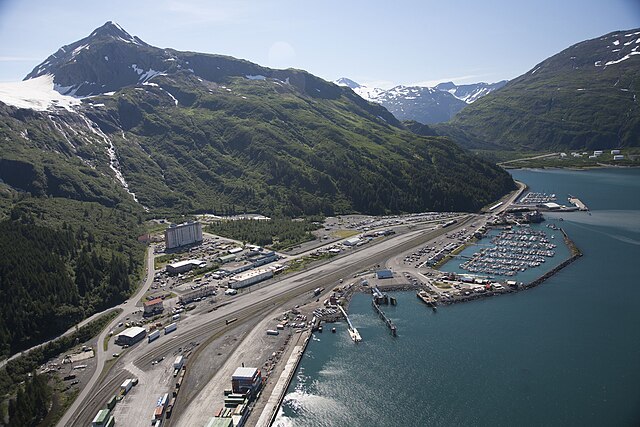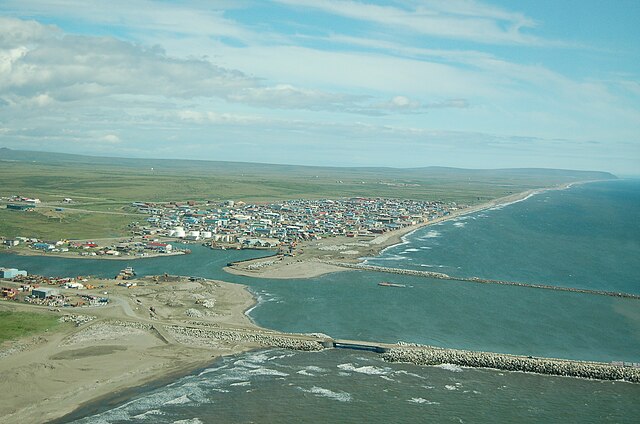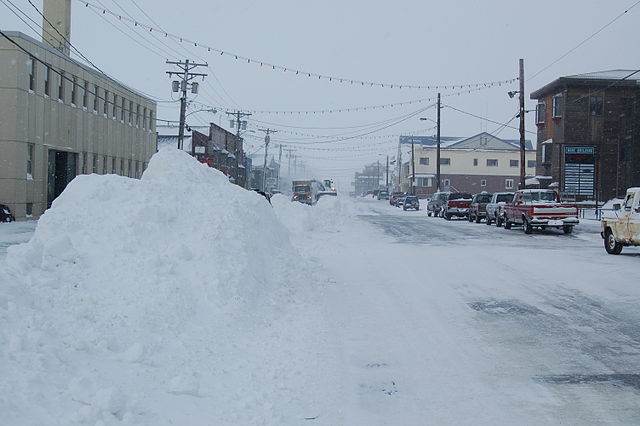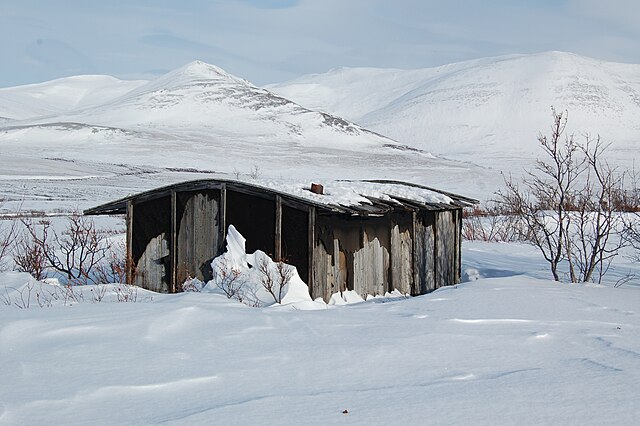Picture this: you’re standing on the rugged coast of Nome, Alaska, with the Bering Sea stretching out before you, the wind whipping through your hair, and the sky shifting from sunny to stormy in the blink of an eye. Nome’s weather isn’t just a backdrop—it’s a character in the story of this remote town, full of drama, beauty, and unpredictability. Whether you’re dreaming of visiting for the Iditarod, planning a summer adventure, or even considering a move, understanding Nome’s weather is your ticket to thriving here. So, what makes this place so unique? Why does the climate feel like it’s got a mind of its own? Let’s dive into the wild world of Nome, Alaska’s weather and explore everything you need to know to conquer its elements.
What Makes Nome’s Weather So Unique?
Nome’s weather is like a box of chocolates—you never know what you’re gonna get. Perched on Alaska’s western coast, this town sits in a subarctic climate zone, where freezing winters, cool summers, and the moody Bering Sea create a one-of-a-kind forecast. It’s not just about cold or snow; it’s the way the wind howls, the fog rolls in, and the seasons shift like scenes in a movie. Whether you’re a thrill-seeker chasing the aurora borealis or a local gearing up for another winter, Nome’s weather demands respect and preparation. Let’s break down what makes it so special.
The Subarctic Climate Explained
Imagine living in a place where winter feels like it’s flexing its muscles for half the year. That’s Nome’s subarctic climate in a nutshell. Temperatures typically range from a bone-chilling -1°F in January to a refreshing 58°F in July, though extremes can hit -26°F or climb to 69°F on rare days. This climate means long, dark winters and short, cool summers, with plenty of snow, wind, and cloud cover. It’s like Mother Nature decided to turn the thermostat way down and keep the skies dramatic. The subarctic vibe shapes everything in Nome, from how people dress to how they plan their day.
The Bering Sea’s Role in Shaping Weather
The Bering Sea is like Nome’s weather maestro, conducting the symphony of storms, fog, and temperature swings. Its cold waters keep summers mild and winters wet, with frequent snow and sleet. Ever notice how coastal towns have that extra layer of moodiness? That’s the Bering Sea at work, stirring up winds that can hit 50 mph and blanketing Nome in fog that feels like a scene from a mystery novel. The sea also fuels sudden storms, making Nome’s weather as unpredictable as a plot twist. If you’re planning a trip, keep an eye on the sea—it’s calling the shots.
A Seasonal Breakdown of Nome’s Weather

Nome’s seasons aren’t just changes in the calendar—they’re full-on transformations. Each one brings its own flavor, challenges, and opportunities. Whether you’re bundling up for a blizzard or soaking up the midnight sun, here’s what you can expect year-round.
Winter: Nome’s Frozen Wonderland
Winter in Nome is like stepping into a deep freezer with a side of adventure. From November to March, temperatures often dip below 20°F, with January averaging around -1°F. Snow piles up, sometimes reaching several feet, and winds can turn a snowy day into a full-blown whiteout. It’s like the town gets wrapped in a thick, icy blanket, with the added drama of polar night—when the sun barely peeks above the horizon. But there’s magic too: the northern lights dance across the sky, making those freezing nights feel worth it. Ready to brave the cold?
Tips for Surviving Winter in Nome
Surviving Nome’s winter is all about preparation. Think of it like suiting up for a space mission—you need the right gear to thrive. Insulated boots, a heavy parka, and layered clothing are your best friends. Locals swear by wool socks and face masks to fend off windburn. Ever tried walking into a 30-mph wind at -10°F? It’s like pushing against an invisible force field. Stock up on supplies, keep your car ready for snow, and always have a backup plan in case a blizzard shuts down roads. Trust me, you’ll thank yourself later.
Spring: A Time of Transition
Spring in Nome, from April to May, is like watching the town slowly wake up from a long nap. Temperatures creep into the 20s and 30s, snow starts to melt, and the days get longer. But don’t toss your winter coat yet—snow showers can still sneak in, and the ground stays frozen for a while. It’s like the weather’s playing tug-of-war between winter and summer. The tundra starts to show signs of life, but you’ll still need to dodge muddy trails and sudden storms. Spring in Nome is all about expecting the unexpected.
Spring storms in Nome can catch you off guard faster than a plot twist in a thriller. The Bering Sea loves to stir up blustery winds and surprise snow squalls, even as temperatures rise. If you’re out exploring, keep an eye on the sky—weather can shift in minutes. Locals recommend checking forecasts twice a day and packing extra layers, like a waterproof jacket and sturdy boots. Ever been soaked by a sudden spring rain? It’s not fun. A good weather app and a flexible mindset will keep you ready for Nome’s spring surprises.
Summer: Nome’s Brief Warm Spell
Summer in Nome, from June to August, is like a breath of fresh air—literally. Temperatures can hit the 50s or low 60s, and the midnight sun means you’ve got nearly 24 hours of daylight. It’s like the sun forgot to clock out. But don’t expect beach weather; cool breezes and occasional rain keep things crisp. This is the season for outdoor adventures, from fishing in the Bering Sea to hiking the tundra. Summer’s short, so Nome locals make every sunny moment count. Ready to join them?
Maximizing Your Summer Experience
Summer’s the time to soak up Nome’s beauty, but you’ve got to be smart about it. Pack layers—think a light jacket for chilly evenings and breathable shirts for sunny afternoons. Bug spray is a must; mosquitoes here are like tiny fighter jets. Ever tried gold panning under the midnight sun? It’s a bucket-list experience. Summer’s also perfect for festivals like the Midnight Sun Festival or exploring Nome’s gold rush history. Just don’t forget sunglasses—the sun’s relentless glare off the water is no joke.
Fall: A Colorful but Chilly Shift
Fall in Nome, from September to October, is like a painter’s palette gone wild. The tundra bursts into reds, golds, and oranges, but temperatures drop back to the 30s and 40s. Rain picks up, and early snowflakes aren’t uncommon. It’s like nature’s throwing a farewell party before winter crashes in. Fall’s short but stunning, making it a great time for photographers or anyone who loves crisp air and vibrant landscapes. Just be ready for wet trails and chilly nights.
Extreme Weather Events in Nome

Nome’s weather doesn’t always play nice. From blizzards that erase the horizon to storm surges that flood the coast, extreme events are part of life here. They’re like nature’s way of reminding everyone who’s boss. Let’s look at the big ones and how they impact the town.
Blizzards and Whiteout Conditions
Blizzards in Nome are like a Hollywood blockbuster—intense, dramatic, and impossible to ignore. Winds can hit 50 mph, whipping snow into a frenzy and reducing visibility to zero. Imagine trying to find your front door when the world’s a swirling white void. These storms can shut down roads, ground flights, and keep everyone indoors. Locals know to stock up on food and fuel before winter hits, and visitors should always have a contingency plan. A blizzard’s no time to wing it.
Storm Surges and Coastal Flooding
Being right on the Bering Sea means Nome’s no stranger to coastal flooding. Fall and winter storms can push seawater onto shore, flooding low-lying areas like it’s an uninvited guest. The town’s seawalls help, but a strong storm surge can still cause havoc. Ever seen waves crash over a road? It’s a humbling sight. If you’re visiting, avoid coastal trails during stormy weather, and check local alerts for flood warnings. Nome’s learned to live with the sea, but it’s always got the upper hand.
Preparing for Nome’s Weather
Nome’s weather is like a tough love teacher—it’ll test you, but you’ll come out stronger if you’re prepared. Whether you’re a local or a first-time visitor, having the right gear and knowledge is your key to success. Here’s how to stay one step ahead of the elements.
Essential Gear for Nome’s Climate
Your Nome wardrobe needs to be as versatile as a Swiss Army knife. In winter, think heavy-duty parkas, insulated boots, and gloves that laugh in the face of -20°F. Summer calls for waterproof jackets, sturdy hiking shoes, and layers for temperature swings. Sunglasses are a year-round must—snow glare in winter and midnight sun in summer can be brutal. Ever tried driving in a blizzard without proper boots? You won’t make that mistake twice. Invest in quality gear, and you’ll be ready for anything Nome throws at you.
Staying Ahead with Weather Forecasts
Nome’s weather moves faster than a sled dog team, so staying informed is crucial. Apps like AccuWeather, Weather Underground, or the National Weather Service’s site are your best bets for real-time updates. Locals check the forecast like it’s their morning coffee ritual. Ever been caught in a rainstorm because you didn’t check the radar? It’s a rookie move. Set up alerts for severe weather, especially in winter, and always have a plan B for outdoor plans. Knowledge is power in Nome.
How Weather Shapes Nome’s Culture

In Nome, the weather isn’t just something you check—it’s part of the town’s soul. From festivals to daily routines, the climate weaves itself into every aspect of life here. It’s like the heartbeat of the community, setting the rhythm for how people live and celebrate.
The Iditarod and Weather Challenges
Nome’s claim to fame is being the finish line for the Iditarod, the world’s most famous sled dog race. But the weather? It’s like the race’s toughest competitor. Blizzards, icy trails, and bitter winds test mushers’ grit, while milder years can turn paths to slush. Ever seen a musher battle 40-mph winds? It’s awe-inspiring. If you’re visiting for the Iditarod in March, pack for every scenario—snow, wind, and maybe even a rare sunny day. The weather makes the race unforgettable.
Local Adaptations to Nome’s Climate
Nome’s residents are like weather wizards, turning challenges into opportunities. Winter means ice fishing and snowmobiling; summer brings berry picking and beach walks. It’s like they’ve cracked the code to thriving in a wild climate. Homes are built to withstand blizzards, and locals always have extra supplies for stormy days. Ever met someone who can predict a storm just by the feel of the air? That’s a Nome local. Their resilience is a lesson in rolling with nature’s punches.
Climate Change and Its Impact on Nome

Climate change is like an uninvited guest in Nome, shaking up the weather patterns locals have known for generations. Warmer Bering Sea temperatures are leading to stronger storms and less predictable winters. Melting permafrost is changing the landscape, and wildlife patterns are shifting. It’s like the climate’s rewriting Nome’s rulebook. For visitors and residents, this means staying informed about changing conditions and preparing for more extreme weather. Nome’s adapting, but the future’s a bit of a wildcard.
When to Visit Nome for the Best Weather
So, when’s the best time to experience Nome’s weather? It depends on your vibe. Summer (June to August) is perfect for mild temps, endless daylight, and outdoor fun like hiking or fishing. Winter (December to February) is for hardcore adventurers chasing the northern lights or the Iditarod’s finish. Spring and fall are quieter, with unique beauty—think melting snow or colorful tundra—but they’re less predictable. Pick your season based on what you love, and Nome’s weather will deliver an unforgettable experience.
Conclusion
Nome, Alaska’s weather is a wild ride, full of extremes, beauty, and surprises. From the icy depths of winter to the fleeting warmth of summer, this town’s climate shapes its landscapes, culture, and people in profound ways. Whether you’re braving a blizzard, chasing the midnight sun, or marveling at fall’s fiery tundra, Nome’s weather is an adventure in itself. With the right gear, a solid plan, and a sense of wonder, you can embrace everything this unique climate has to offer. So, are you ready to step into Nome’s weather world? Layer up, stay sharp, and let the journey begin.
Frequently Asked Questions
1. What’s the coldest temperature ever recorded in Nome?
Nome’s record low dipped to -42°F in January 1989, though typical winter lows hover around -26°F. Bundle up!
2. How does the midnight sun affect life in Nome?
The midnight sun in June and July means nearly 24-hour daylight, boosting outdoor activities but making sleep schedules tricky.
3. How much snow does Nome get annually?
Nome averages about 80 inches of snow per year, with heavy falls from November to March creating a winter wonderland.
4. Are Nome’s storms dangerous for travelers?
Storms can be intense, especially blizzards and storm surges. Proper gear, planning, and checking forecasts keep travelers safe.
5. What’s the best way to check Nome’s weather?
Use apps like AccuWeather or the National Weather Service for daily forecasts and severe weather alerts to stay prepared.

